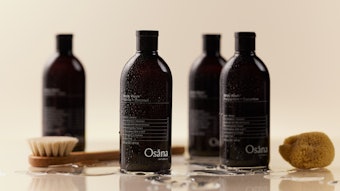According to new research from Mintel Beauty & Personal Care on the dry shampoo market, a shower is no longer necessary when it’s time to suds up your hair. In fact, Mintel’s Global New Products Database (GNPD) found that in 2008, dry shampoo introductions accounted for just 1% of global shampoo launch activity but by 2012 the segment captured 3% of category NPD, and 2013 is on track to surpass 2012 levels.
“The benefits of daily shampooing continue to be questioned, as many have argued that too frequent washing can actually strip the hair of its natural oils, creating an opportunity for these waterless shampoos to shine,” says Amy Ziegler, Mintel beauty and personal care analyst. “In addition, dry shampoo has made a serious case for convenient cleansing as it provides the functional cleansing benefits without the wash, rinse, repeat routine, and directly ties into consumers’ ease of use expectations.”
Although availability of dry shampoos is widely accessible, consumer uptake remains relatively low. A meager 16% of U.S. adults report some usage of a dry shampoo in the last year. Across the Big 5 European markets (the U.K., Spain, France, Germany and Italy), usage is relatively similar to that of the U.S., but peaks in the U.K., where nearly a quarter (23%) of women are engaged in the segment.
Convenience is a compelling attribute for consumers and plays a definite part in their hair care product purchases. In fact, nearly one in five (17%) women in the U.K. use dry shampoo when they don’t have time to wash their hair, and although this sentiment is less widely shared among the remaining Big 5 European countries (only 5% of women), it identifies an important consideration for manufacturers.
Beauty brands have responded to consumers’ preferences by incorporating convenient attributes into their dry shampoo product launches. The time/speed claim has been present in 53% of dry shampoos launched since 2009, making it not only the most frequently used claim in the segment, but also one of the fastest growing, according to Mintel’s GNPD.
“Consumers shop the hair care aisle with their individual needs in mind, preferring to buy products that directly speak to their hair type, condition and style. Dry shampoo is no different and is selected based on the same criteria. For women, product benefits trump low price to take the top spot on the desired attribute list,” adds Ziegler.
Beauty-enhancing claims are becoming more commonplace in dry shampoo NPD too and have been present in 19% of global introductions since 2009. Brightening and illuminating benefits have posted the most significant growth, with introductions more than doubling 220% between 2009 and 2011. In addition, more than half (53%) of U.S. women find the fragrance of their shampoo and conditioner to be an important characteristic.
“In the future, the dry shampoo market will expand by way of unique fragrances, more beauty-focused benefits and new format types. Shine, which is not normally associated with dry shampoo, is a top priority for consumers and will therefore be a top priority for manufacturers,” concludes Ziegler.











